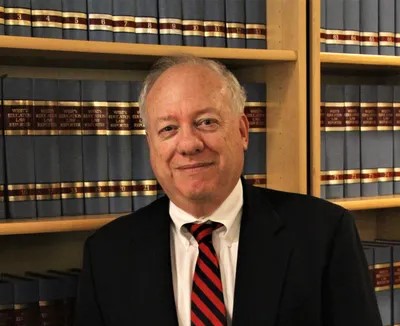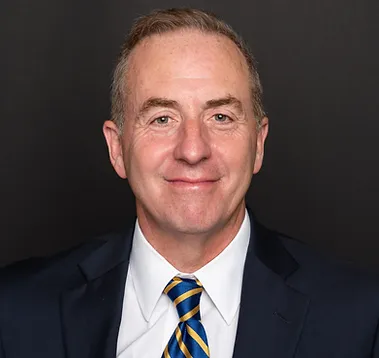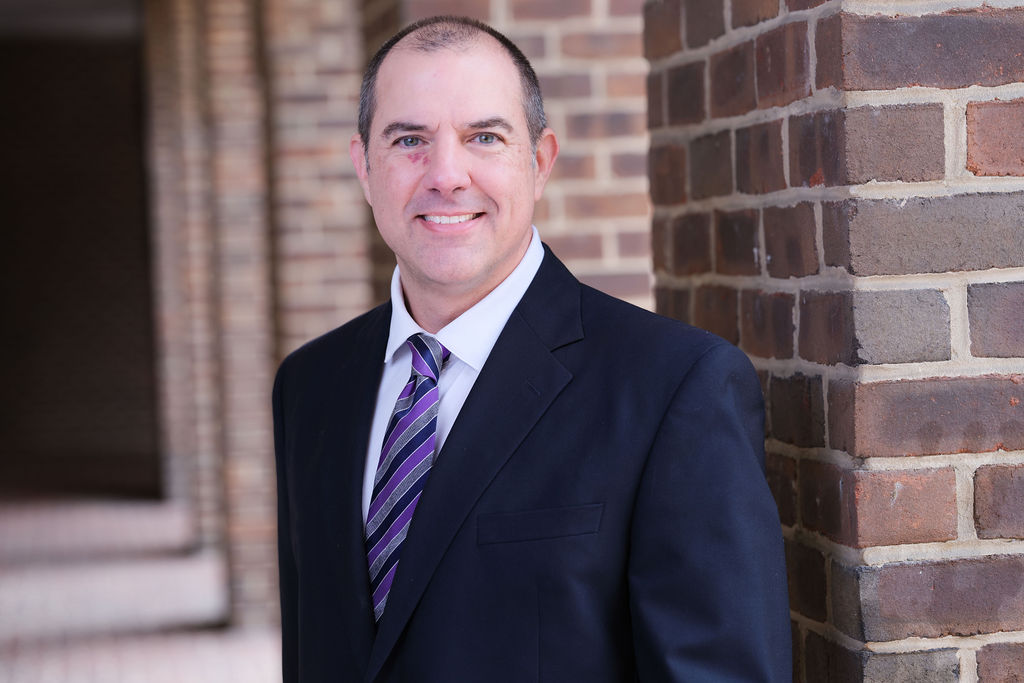Until 1997, it appeared that, under the law of all American states, any trust an individual created or “settled” for himself or herself (a so-called self-settled trust) was permanently subject to the claims of creditors of the grantor regardless of the motivation for creating the trust and even if the grantor was merely eligible and not entitled to receive distributions from the trust in the discretion of an independent trustee. 1
For example, section 58 of the Restatement (Third) of Trusts provides that a self-settled trust is permanently subject to the claims of the grantor’s creditor’s. 2 On 4/1/1997, Alaska adopted a statute (AS 34 .40.110) which provides that, if a trust contains a transfer restriction, it is not subject to the claims of the grantor’s creditors unless (1) the grantor may revoke or terminate the trust, (2) the grantor intends when the transfer of property is made to the trust to defraud a creditor, (3) the grantor is in default of child support payments by 30 or more days, or (4) the requires that income or corpus be distributed to the grantor.
IRC Section 2036(a)(1) has provided since 1931 that a decedent’s gross estate includes property he or she has transferred in trust or otherwise during lifetime other than for full and adequate consideration in money or money ‘s worth if the decedent retained the right to the income from that property. The right to the income need not be express but may be implied and need not be legally enforceable. 3 For example, if there is an implied understanding between the grantor and the trustee that the trustee will distribute property to the grantor, the trust will be included in the grantor’s estate. 4
The tax law follows creditors’ rights with respect to the gift and estate taxation of a self-settled trust. In other words, if an individual creates a self-settled trust in a jurisdiction where his or her creditors may attach the trust assets, the transfer to the trust is an incomplete gift (and, therefore, not subject to gift tax) and the trust is included in his or her estate, even if the settlor did not retain the right to the income and did not have an understanding that he or she would receive distributions from the trust. 5 Thus, the mere fact that the grantor’s creditors may attach the trust assets is sufficient to cause the trust to be included in his or her estate. 6
A transfer is incomplete for federal gift tax purposes if the grantor retains sufficient ” dominion and control” over the property within the meaning of Reg. 25.2511-2(b) 7 As discussed in more detail below, the power conferred under local law upon the grantor to be able to relegate his or her creditors to the assets of the trust prevents the transfer to the trust from being complete because the grantor has retained sufficient dominion and control over the transferred property.
Among other IRC provisions, property transferred during life may also be included in the transferor’s estate if the grantor at death holds the power (i.e., a legally enforceable right) to control the beneficial enjoyment of the trust property. 8 Both Sections 2038(a) and 2036(a) have been used to cause a self-settled trust whose assets are subject to the claims of the grantor’s creditors to be included in the grantor’s estate. 9
Creditor’s Claims
Aren’t all transfers potentially subject to creditors’ claims?
Any transfer made by an individual with actual intent to delay. hinder or defraud creditors (a so-called fraudulent transfer) is subject to the claims of his or her existing or reasonably foreseeable future creditors, whether the transfer is in trust or outright. 10 Hence, if an individual transfers property directly to his or her spouse or child with such an intent, the transferor’s creditors may attach the property to pay their claims.
Whenever all individual transfers property, it may subsequently be determined to be a fraudulent transfer. Because the property so fraudulently transferred is subject to the claims of the transferor’s creditors, it might be argued that it is not subject to gift tax, Indeed, whenever a transfer during life is made, it is possible that some creditor will be able to prove in some court having jurisdiction over the property and/or the transferor that it was a fraudulent transfer, In some cases, the stature of limitations against a claim of a fraudulent transfer does not begin to run until the transfer is discovered by the creditor. 11 That means that any lifetime transfer is potentially subject to the claims of the transferor’s creditors at any time. But that mere possibility is insufficient to render the transfer incomplete for gift tax purposes or to cause the property to be included in the transferor’s estate.
IRS test: Ability to relegate creditors to the trust assets.
The IRS appears to have developed a test to determine if a transfer is incomplete for federal estate and gift tax purposes. With respect to transfers to trusts, the IRS has officially ruled that the transfer is in complete (and, therefore, not subject to gift tax) if the law governing the trust provides that the creditors of the grantor may attach the trust property. For example, in Rev, Rul. 76-103, 12 the IRS stared with respect to a self-settled trust under which the trustee could, but was not required to, distribute income and principal to the grantor:
“The trust was created in State X and has been administered under the laws of that State from the date of the transfer *** Under the law of State X, the trust is a “discretionary trust” and the entire property of the trust may be subjected to the claims of the grantor’s creditors, whenever such claims may arise. *** in the instant case, the grantor’s transfer of property to the trust does not constitute a completed gift for Federal gift tax purposes,*** If and when the grantor’s dominion and control of the trust assets ceases, such as by the trustee’s decision to move the situs of the trust to a State where the grantor’s creditors cannot reach the trust assets, then the gift is complete for federal gift tax purposes under the rules set forth in section 25.2511-2 of the regulations … Furthermore, if the grantor dies before the gift becomes complete, the date of death value of the (rust corpus will be includible in the grantor’s gross estate, for Federal estate tax purposes, under section 2038 of the Code because of the grantor’s retained power to, ill effect, terminate the trust by relegating the grantor’s creditors to the entire property of the trust. The reason the transfer is regarded as incomplete is because the grantor; in such a case, may “relegate” his, or her creditors to the assets of the trust.”
However, if the grantor has a mere expectancy that he or she might receive distributions from the trust, then the gift is complete. In Rev. Rul. 77-378, 13 the IRS stared, again with respect to a self-settled trust:
“[U]nder the applicable state law the trustee’s decision whether to distribute trust asset, to the grantor is entirely voluntary, the grantor cannot require that any of the trust’s asset, be distributed to the grantor nor can the creditors of the grantor reach any of the trust’s assets. *** [I]f the grantor retains … a mere expectancy that the trustee will distribute trust assets to the grantor rather than an enforceable interest in the trust, the expectancy docs not prevent the completion or reduce the value of the gift. *** Although the trustee has an unrestricted power to pay trust assets to the grantor, the grantor cannot require that any of the trust’s assets be distributed to the grantor nor can the grantor utilize the assets by going into debt and relegating the grantor’s creditors to the trust. *** Whether the grantor would enjoy any of the trust’s assets is dependent entirely on the uncontrolled discretion of the trustee. Such a hope or passive expectancy does not lessen the value of the property transferred. Accordingly, the Federal gift tax is applicable to the entire value of the property transferred to the trust by the grantor.”
Hence, it seems virtually certain that whether a transfer to a self-settled trust, under which the grantor is not entitled but only eligible in the discretion of the trustee (other than the grantor) to receive distributions from the trust, is a completed gift turns on whether, under the local law that governs the trust and under which it is administered, the grantor’s creditors can attach the assets of the trust. In other words, if under the local law that governs the trust and under which it is administered, the grantor can relegate his or her creditors to the trust assets, the gift is incomplete. If the grantor cannot so relegate the creditors, the gift is complete.
Does it Follow the Trust is not in the Gross Estate?
Estate and gift tax provisions are to be construed in pari materia or, in other words, consistently. 14 Does it, therefore, follow that if a self-settled trust is governed by and administered in a state where the grantor’s creditors cannot attach the trust assets that the trust is excluded from the grantor’s estate (assuming it is not included for some other reason, such as the grantor’s retention of a power to change the timing of when beneficiaries of the trust, other than himself or herself, will receive trust property)?
In most cases, a transfer that is a completed gift in its entirety is not in the transferor’s estate. But there are circumstances where estate tax inclusion will occur even with respect to property that has been the subject of a gift completed during lifetime. For example, a transferor almost certainly would nor retain sufficient dominion and control over property to render the gift incomplete if the grantor transferred it to another with an implied understanding that the transferor could continue to use the property unless the creditors of the grantor could attach the transferred asset by reason of that understanding. Yet, that implied understanding is sufficient to cause the transferred property to be included in the grantor’s estate. 15
There is at least one other circumstance where a transfer of property during life is a completed gift but nonetheless will be in the transferor’s estate. Reg. 25.2511-2 (d) states:
“A gift is not considered in complete, however, merely because the donor reserves the power to change the manner or time of enjoyment. Thus, the creation of a trust the income of which is to be paid annually to the donee for a period of years, the corpus being distributable to him at the end of the period, and the power reserved by the donor being limited to a right to require that, instead of the income being so payable, it should be accumulated and distributed with the corpus to the donee at the termination of the period, constitutes a completed gift.”
Yet, a power to determine the timing of distributions from a trust causes the property to be included in the grantor’s estate. Reg. 20.2038-1(a) provides, in part:
“[S]ection 2038 is applicable to a power reserved by the grantor of a trust to accumulate income or distribute it to A, and to distribute corpus to A, even though the remainder is invested in A or his estate, and no other person has any beneficial interest in the trust.”
Despite the fact that, in some cases, property that has been the subject of a completed gift during lifetime may also be included in the transferor’s estate, there is no law to suggest it would occur with respect to a self-settled trust governed by the laws of, and administered in, a state where the grantor’s creditors cannot reach the trust assets and the grantor retained no other interest or power that would render the gift incomplete or cause it to be included in the grantor’s estate. In fact, the law seems virtually certain that there is no estate tax inclusion.
Case Law and Private Letter Rulings
In Estate of Uhl, 16 the Seventh Circuit Court of Appeals held that the portion of the trust the decedent created during lifetime and from which he had not retained the right to the income but from which the trustee could pay him the income was not included in his estate because, under Indiana law, which governed the trust, his creditors could not attach the trust assets because the Seventh Circuit concluded that he had not retained the benefit of the property within the meaning of Indiana’s fraudulent conveyance statute.
Perhaps, the case that deals most explicitly with the issue of creditors’ rights and estate tax inclusion of a self-settled trust is Estate of German. 17 In that case, Mrs. German, a Florida domiciliary, created a trust under Maryland law. Mrs. German was not a trustee, but her son was one of the trustees and lived in Maryland. The trustees were authorized, in their discretion, to distribute income and corpus of the trust to her, although only with the consent of an adverse party (that is, another beneficiary). In holding that the trust was not included in her estate, the court stated in part:
“The question presented is whether the decedent divested herself of her interest in property in 1969 when she transferred such property to a trust with a proviso that the trustees might, in their absolute discretion, pay any or all of the income or principal to decedent at any time during her lifetime, if they received the written consent of the person who was entitled to receive the principal and accumulated income of the trust after her death, or whether she continued to enjoy the right to the income or principal of the trust up to date of her death, because under Maryland law if she chose to incur any debts her creditors could still attach or levy upon the trust assets to collect them.” ***
[T]he narrow issue to be decided herein is as to the extent of decedent’s creditors’ rights with respect to the trust income and assets under Maryland law. ***
“Defendant [IRS] has not established that under Maryland law creditors of the settlor could have reached the trust income or principal of her discretionary trusts up to the time of (her death.)”
It seems apparent that the fact that the trustees could make distributions to Mrs. German only with the consent of an adverse party had no impact on the court’s test that inclusion turned on whether her creditors could attach the trust assets under Maryland law. It seems to have had something to do with the court’s conclusion that the IRS had “not established that under Maryland law creditors of the settlor could have reached the trust income or principal of her discretionary trusts up to the time of her death.” But, again, it seems to have nothing to do with the tax issue which the court phrased as “the narrow issue to be decided herein is as to the extent of decedent’s creditors’ rights with respect to the trust income and assets under Maryland law.”
The IRS has previously issued two private letter rulings (which under IRC Section 6110(k)(3) may not be cited or used as precedent) in which it concluded that a self-settled trust, created under the law of a jurisdiction where the grantor’s creditors could not attach the trust assets, was not included in the estate of the grantor.
In Ltr. Rul. 9332006 (not precedent), two siblings, who were U.S. citizens, created an irrevocable trust in a foreign country, which provided that interests in self-settled trusts were not subject to the claims of the grantor’s creditors. The beneficiaries of the trust in the ruling included the siblings, a living parent, and their future heirs.
The laws of the country allowed a protector of the trust who held certain powers over the trust, including the power to appoint new or additional trustees. The protector also was a U.S. citizen, and the trust provided that neither the protector nor his estate could be a beneficiary. The trust further provided that the protector was neither a person nor entity related to or under the control of the grantors. The beneficiaries could not compel distributions from the trust, The trust was determined to be a foreign trust for purposes of Section 7701(a)(31). 18 The siblings funded the trust with fractions of directly held partnership interests.
The IRS ruled that the partnership interests transferred to the trust were completed gifts and, therefore subject to gift tax, finding that the grantors had parted with dominion and control of the property on the transfer. The Service further ruled that the partnership interests would not be includible in the grantors’ estates, finding that the trustee’s discretion to make distributions to the grantors was not a retained interest or power.
Ltr. Rut. 8037116 (not precedent) involved a self-settled trust governed by the law of New York. The ruling relics on Herzog, 19 a decision by the judicial panel of Judges Learned Hand, Augustus Hand and Chase of the Second Circuit Court of Appeals, which concluded that the self-settled trust was not subject to the claims of the grantor’s creditors and, therefore, the transfer to it constituted a completed gift for federal gift tax purpose. Ln. Rul. 8037116 states, in part:
“In this case, the decedent did not retain the right to possess, enjoy, or receive income from the property, but he did retain the opportunity to enjoy it. However, in the same jurisdiction, the [Second Circuit] Circuit Court of Appeals has characterized such a beneficiary status as a hope or passive expectancy rather than a right to enjoyment of the property, with the result that the property was not includible in the gross estate. Herzog v. Comm., 116 F 2d 591, 593 (2nd Cir. 1941). We conclude that the ability of this decedent to receive income and principal under the terms of the trust he created is not sufficient to require inclusion of the property under Section 2036(a)(1) of the Code.”
It may be of interest to note that the decision of the Second Circuit in Herzog that the self-settled trust was not subject to the grantor’s creditors under New York law may have been incorrect. In Vanderbilt Credit Corp. v. Chase Manhattan Bank 20 an intermediate court of New York state held that a self-settled trust is subject to the claims of the grantor’s creditors. Indeed, in two separate statutes, New York law provides that a self-settled trust is void with respect to the grantor’s creditors.21
But the Second Circuit did not explicitly hold that under New York law, the creditors of the grantor could not attach the trust assets but rather New York law was not sufficiently certain that they could attach the trust property to render the gift incomplete. Nevertheless, the fact that the Second Circuit may have incorrectly construed New York law does not change the fact that it developed the test that whether a self-settled trust is included in the grantor’s estate turns on whether creditors of the grantor may attach the trust assets. And, in any case, it appears the IRS has fully adopted that test.
Perhaps, of greater interest is the characterization by the IRS in Ltr. Rul. 8037116 of the Second Circuit’s holding. The ruling, as quoted above, says, in part, “has characterized such a beneficiary status as a hope or passive expectancy rather than a right to enjoyment of the property, with the result that the property was not includible in the gross estate.” In fact, the court did not, as the letter ruling incorrectly states, hold the property was not included in the grantor’s estate but rather that the grantor’s lifetime transfer to the trust was complete for gift tax purposes. But, it seems that the IRS has concluded that it means also that the trust property would not be included in the grantor’s estate if creditors could not attach it.
IRS Official Position on Estate Tax Inclusion of Self-Settled Trusts
Of course, private letter rulings, such as Ltr. Ruls. 9332006 and 8037116, may not be cited or used as precedent, although they may be used to establish substantial authority In some cases to avoid the imposition of the penalty under IRC Section 6662 for the substantial underpayment of income tax. 22 In any event, the letter rulings are consistent in holding that a self-settled trust is not included in the grantor’s estate if the grantor’s creditors cannot attach the trust assets (unless some other factor, such as the retention of the right to income, is present).
More important is that the official position of the IRS is also consistent with that holding. In Rev. Rul. 76-103, the IRS stated, “Furthermore, if the grantor dies before the gift becomes complete, the date of death value of the trust corpus will be includible in the grantor’s gross estate, for Federal estate tax purposes, under section 2038 of the Code because of the grantor’s retained power to, in effect, terminate the trust by relegating the grantor’s creditors to the entire property of the trust.” Because inclusion in the grantor’s estate was premised the grantor’s power to relegate his or her creditors to the assets of the trust. It seems to follow logically that if the grantor dies after the gift becomes complete, the trust corpus will not be includable in the grantor’s estate, for federal estate tax purposes, because the grantor would not have retained a power to, in effect, terminate the trust by relegating the grantor’s creditors to the entire property of the trust.
Nonetheless, the culmination of the IRS acceptance of the test that inclusion of a self-settled trust in the grantor’s estate turns on whether the grantor’s creditors can attach the assets of the trust seems to be set forth in Rev. Rul. 2004-64. 23 The trust involved in that Ruling was a grantor trust-that is, one that under IRC Section 671 had its income attributed to the grantor so the grantor had to include the trust’s income in his or her gross income. The Ruling is best known for its holding that the grantor would not be treated as making a gift by paying the income tax on the trust’s income that was attributed to the grantor under Section 671. 24
But Rev. Rul. 2004-64 also deals with an aspect of the tax effects of a self-settled trust. The Ruling states. “If, pursuant to the trust’s governing instrument or applicable local law, the grantor must be reimbursed by the trust for the income tax payable by the grantor that is attributable to the trust’s income, the full value of the trust’s assets is includible in the grantor’s gross estate under § 2036(a)(1). If, however, the trust’s governing instrument or applicable local law gives the trustee the discretion to reimburse the grantor for that portion of the grantor’s income tax liability, the existence of that discretion, by itself (whether or not exercised) will not cause the value of the trust’s assets to be includible in the grantor’s gross estate.”
Nonetheless, the Ruling also states, “However, such discretion [to reimburse the grantor for such income tax] combined with other facts (including but not limited to: an understanding or pre-existing arrangement between A and the trustee regarding the trustee’s exercise of this discretion; a power retained by A to remove the trustee and name A as successor trustee; or applicable local law subjecting the trust assets to the claims of A’s creditors) may cause inclusion of ‘Trust’s assets in A’s gross estate for federal estate tax purposes.”
New Letter Ruling Involving Alaska Law
Before discussing the new letter ruling, it seems appropriate to discuss Ltr. Rul. 9837007. In that ruling, an Alaska resident proposed to create a self-settled trust for the benefit of herself and her descendants under which the trustee (which was other than herself) could, but was not required to, accumulate all income or pay income and/or corpus to one or more of the beneficiaries. The ruling recites that, under the law of the state (which clearly was Alaska) that governs the trust, because the trust contains certain language specified in the statute, a creditor of the grantor will be precluded from satisfying claims out of the grantor’s interest in the trust.
The letter ruling relics primarily Rev. Rul. 77-378 and holds, “Based on the representation that there is no express or imp bed agreement between the Donor and the Trustee as to how Trustee will exercise its sale and absolute discretion to pay income and principal among the beneficiaries, we conclude that the proposed transfer by Donor of property to Trustee to be held under the Trust agreement will be a completed gift for federal gift tax purposes.” However, Ltr. Rul. 9837007 also states, “We are expressly not ruling on whether the assets held under the Trust agreement at the time of Donor’s death will be includible in Donor’s gross estate for federal estate tax purposes.” Ltr. Rul. 200944002 expressly answers the issue not addressed in Ltr. Rul. 9837007.
ln the new letter ruling (Ltr. Rul. 200944002), the grantor proposed to create a trust for the benefit of himself, his wife, and his descendants. Under the terms of the trust, the trustee could, but was not required to, accumulate all income or pay income and/or corpus to one or more of the beneficiaries. Upon the grantor’s death. the trust would be divided into per stirpital shares for his descendants and held in further trust for them or, if no descendant is then living, to charity. The trustee was neither a related nor subordinate party within the meaning of IRC Section 672(c) with respect to the grantor. The grantor and certain others are prohibited from being a trustee.
The ruling recites the grantor is a resident of the stare under which the trust is created. From the facts recited about local law, the state is Alaska. The ruling correctly recites that, under state law, if the trust contains a transfer restriction (which the trust does), it is not subject to the claims of the grantor’s creditors unless (1) the grantor may revoke or terminate the trust, (2) the grantor is intending when the transfer of property is made to the trust to defraud a creditor, (3) the grantor is in default of child support payments by 30 days, or (4) the trust requires that income or corpus be distributed to the grantor. Representations were made that none of those four conditions existed. In addition, the trustee would be prohibited, under the terms of the trust, from reimbursing the grantor for income tax imposed on the grantor on trust income attributed to the grantor under IRC Section 671.
Based primarily on Rev. RuJ. 2004-64, the IRS concluded, “because the trustee is prohibited from reimbursing Grantor for taxes Grantor paid, the Grantor has not retained a reimbursement right that would cause Trust corpus to be includible in Grantor’s gross estate under § 2036. See Rev. Rul. 2004-64. In addition, the trustee’s discretionary authority to distribute income and/or principal to Grantor, does not, by itself, cause Trust corpus to be includible in Grantor’s gross estate under § 2036.” But the IRS added, “We are specifically not ruling on whether Trustee’s discretion to distribute income and principal of Trust to Grantor combined with other facts (such as, but not limited to, an understanding or preexisting arrangement between Grantor and trustee regarding the exercise of this discretion) may cause inclusion of Trust’s assets in Grantor’s gross estate for federal estate tax purposes under § 2036.”
Ltr. Rul. 200944002 seems completely consistent with the official position of the IRS. Although this letter ruling cannot be cited or used as precedent, taxpayers may rely on Revenue Rulings. 25 And the result reached in Ltr. Rut. 200944002 is essentially the same as that reached in Rev. Rut. 2004-64.
Consequently, it seems that if a taxpayer creates a self-settled spendthrift Alaska trust, the trust will not be included in the grantor’s estate unless the grantor retains some power or interest (such as the right to the income or the power to control where the property will pass when the grantor dies) to cause it to be included. Nevertheless, there are four important issues that should be addressed:
- Although the IRS ruled in both Ltr. Rul. 200944002 and Rev. Rul. 2004-64 that the trust would not be included in the grantor’s estate under Section 2036, could a self-settled trust be included under Section 2038 even if the grantor’s creditor could not attach the trust assets?
- Does the Bankruptcy Abuse Prevention and Consumer Protection Act of 2005 (“2005 Bankruptcy Act”) affect the question of whether a self-settled trust is included in the grantor’s estate?
- Would the result reached in the letter ruling be the same if the grantor were not an Alaskan?
- Would the result reached in the letter ruling he the same if the law governing the trust was not that of Alaska but of some other state which provides creditor protection for self-settled trusts?
Section 2038 and Self-Settled Trusts
Rev. Rul. 76-103 held that, if the grantor died before the gift to the self-settled trust became complete by changing the situs of the trust from one state where it was subject to the claims of the grantor’s creditors to another state where it was not subject to such claims, the trust would be includible in the grantor’s estate, for federal estate tax purposes, under IRC Section 2038 because of the grantor’s retained power to, in effect, terminate the trust by relegating the grantor’s creditors to the entire property of the trust. But, if the grantor could not so relegate his or her creditors to the trust, it should not be included in the grantor’s estate. Because under the new letter ruling the grantor’s creditors may not attach the assets of the self-settled trust, Section 2038 should not apply.
2005 Bankruptcy Act and Estate Tax Inclusion
The 2005 Bankruptcy Act made many changes to the bankruptcy laws of the United States. One may have a direct impact on the efficacy of self-settled trusts with respect to asset protection. Section 548 of the Bankruptcy Code 26 (which was adopted by the 2005 Bankruptcy Act) provides that the trustee in bankruptcy may avoid any transfer of an interest of the debtor that was made on or within ten years before the filing of the bankruptcy petition if, among other conditions, the transfer is made to a “self-settled trust or similar device” and the debtor made the transfer with the “actual” intent to hinder, delay or defraud any entity to which the debtor was or became, on or after the date the transfer was made, indebted.
The scope of the new section is uncertain. 27 Nevertheless, even if it means that the trustee in bankruptcy can attach the assets in a self-settled trust, it does not give the grantor the power to simply relegate his or her creditors to the assets of the trust. At the time of the transfer, presumably, the grantor will not be in bankruptcy, which is a necessary condition for the new bankruptcy rule to apply. Moreover, a finding by the bankruptcy court of the actual intent to defraud, etc. would have to be made. Those events are so remote that it seems quite certain that the Act has no impact on whether the transfer is complete or the property involved is included in the grantor’s estate.
Importance of the Grantor’s Domicile
In both Ltr. Ruls. 9837007 and 200944002, the grantor was an Alaskan. However, it does not seem that the conclusions reached would be different if the grantor were domiciled in another state. In fact, in Ltr. Rul. 9332006, the grantors were Americans who created the self-settled trusts under a foreign country’s laws which protected the trusts from claims of the grantors’ creditors. Yet the IRS concluded that the trusts would not be included in the grantors’ estates without discussing the rights of creditors under the law of the domicile of the grantors.
Estate of German seems on point. The grantor in that case was a Floridian, but the trust was created and administered under the laws of Maryland, where one of the trustees resided. The court makes it clear that the question of whether the trust would be included in Mrs. German’s estate ruled on “the extent of decedent’s creditors’ rights with respect to the trust income and assets under Maryland law,” not Florida law.
There are some cases which suggest that courts may attempt to apply the laws of the grantor’s domicile to determine whether a self-settled trust created and administered under the laws of a jurisdiction other than that domicile is subject to the claims of the grantor’s creditors. Examples include In re Portnoy 28 and In re Brooks. 29 The correctness of those decisions has been questioned. 30 But, perhaps, the cases are correct. Both Portnoy and Brooks involved foreign self-settled trusts, and the courts refused to grant the grantor a discharge in bankruptcy by holding that the trusts were part of the bankruptcy estate of the grantor but were not available to the grantor’s creditors. Nevertheless, it seems certain that the grantor could not, under the foreign laws under which the trusts were formed and were administered, relegate his or her creditors to the asset” of the trust.
The key in determining whether a transfer to a self-settled trust is a completed gift and whether it is in the grantor’s estate turns on whether the grantor may relegate his or her creditors to the trust assets. Certainly, if an individual not domiciled in Alaska creates a self-settled trust which is governed by the laws of and is administered in Alaska, the individual may not simply relegate his or her creditors to the trust assets.
The fact that someday some court might somehow conclude that the grantor’s creditors could attach the t rust assets certainly seems insufficient to render the gift incomplete or to cause the trust to be included in his or her estate. Indeed, under the law of Florida, it seems nearly certain that Mrs. German’s creditors could have attached the assets in the self-settled trust she created. 31 As impliedly recognized by the definition of spendthrift trusts set forth in Groom, 32 Florida law will not protect assets contained in a spendthrift trust to the extent the settlor creates the trust for his or her benefit, rather than for the benefit of another.
Moreover, the grantor of the trust in Ltr. Rul. 200944002 might move to another state which allows a grantor’s creditors access to the assets of a self-settled trust. Perhaps, a court in the grantor’s new domicile would conclude that under its law, the assets in the Alaska trust are subject to his creditors. Nothing in the law seems to absolutely preclude such a conclusion. And, of course, courts make mistakes in applying the law but, even if they do, the parties will be bound by their erroneous decisions unless they successfully are able to overturn them by some appeal or other process. But, any lifetime transfer, whether in a self-settled trust or otherwise, is potentially subject to the claims of a transferor’s creditors, as reflected by the 2005 Bankruptcy Act. However, it seems virtually certain that such a mere possibility of creditor attachment someday alone is insufficient to prevent the transfer from being a completed gift or to cause it to be included in the grantor’s estate.
It is also appropriate to mention that, in any case where the grantor’s ability to extract a benefit from the trust is dependent upon a court’s willingness to apply the law of the grantor’s domicile instead of the law of the state designated in the trust instrument, it is difficult to view the grantor as having retained the right to relegate his/her creditors to the assets of the trust. The concept of relegation, the touchstone of the analysis in Rev. Rul. 76-103, is not an insignificant aspect of Section 2036. It contemplates that one or more of the grantor’s creditors must have unfettered access to the trust’s assets.
Nor is the concept without foundation in the Section 2036 jurisprudence. Indeed, it can be traced back to the notion in Byrum 33 that Section 2036(a)(1) does not apply where the grantor retains something that is merely speculative and/or contingent. This seems similar to the phrase in Rev. Rul. 77-378 of “a hope or passive expectancy” where the grantor is a mere discretionary beneficiary and the trust is governed by the law of a state where his or her creditors cannot attach the trust assets to pay the grantor’s debts, and that phrase is in turn derived from Herzog, 34 which seems to be the first case involving the gift tax effects of transferring property to a self-settled trust, where the court started that “a hope or passive expectancy is not a right.” Thus, if the grantor cannot unqualifiedly assure his/her creditors at inception that they can reach the trust’s assets to satisfy their claims, Section 2036 should not apply. (Based on this reasoning, any creditor’s right to set aside the trust on fraudulent conveyance grounds should similarly be irrelevant to the Section 2036 analysis.)
Laws of Other Self-Settled Trust States
The culmination of the reasoning of the IRS as to its official position with respect to the gift completeness and estate tax inclusion of a self-settled spendthrift trust seems to be reflected most recently in Rev. Rul. 2004-64 upon which Ltr. Rul. 200944002 is based. The conclusion, as stated in the letter ruling, is “[T]he trustee’s discretionary authority to distribute income and/or principal to Grantor, does not, by itself, cause the Trust corpus to be includible in Grantor ‘s gross estate under § 2036,” although the letter ruling adds that it is specifically not ruling on whether the trustee’s discretion to distribute income and principal of the trust to the grantor combined with other facts (such as, but not limited to, an understanding or pre-existing arrangement between grantor and trustee regarding the exercise of this discretion) may cause inclusion of the trust’s assets in the grantor’s estate for federal estate tax purposes.
Rev. Rul. 2004-64, in dealing with “Situation 3,” where the trustee may but it is not required to reimburse the grantor for the income taxes the grantor owes on the income imputed to the grantor under IRC Section 671, stales, in part:
[A]ssuming there is no understanding, express or implied, between [the grantor] and the trustee regarding the trustee’s exercise of discretion, the trustee’s discretion to satisfy [the grantor’s] obligation [to pay the income tax] would not alone cause the inclusion of the trust in [the grantor’s] gross estate for federal estate tax purposes. This is the case regardless of whether or not the trustee actually reimburses [the grantor] from Trust assets for the amount of income tax [the grantor] pays that is attributable to Trust’s income. *** However, such discretion combined with other facts (including … applicable local law subjecting the trust assets to the claims of [the grantor’s] creditors) may cause inclusion of Trust’s assets in [the grantor’s] gross estate for federal estate tax purposes.” 35
Rev. Rul. 2004-64 seems to indicate that, if any creditor of the grantor may reach the trust assets, the trust will be included in the grantor’s estate. By way of example, the Utah self-settled spendthrift trust statute allows the State of Utah to attach the trust assets if the grantor ever becomes indebted to the state, such as it seems for income tax on income attributed to the grantor from a grantor trust 36 Therefore, it seems likely that a Utah self-settled trust would be included in the grantor’s estate under the reasoning of Rev. Rul. 2004-64.
In the trust described in Situation 3 of the Revenue Ruling, the only interest the grantor had was the eligibility to receive distributions from the trust to reimburse the grantor for income tax the grantor had to pay on the trust income imputed to the grantor under Section 671. Although Rev. Rul. 2004-64 does not state that estate tax inclusion would occur even if only a tax authority could attach the trust assets by reason of the eligibility of the grantor to be reimbursed for income tax, the Ruling would seem to require inclusion in that situation. Under Reg. 20.2036-1(b), inclusion occurs “to the extent that the use, possession, right to the income or other enjoyment [from the trust] is to be applied toward the discharge of a legal obligation of the decedent or otherwise for his pecuniary benefit.” Under this Regulation, if any creditor of the grantor is able to reach trust assets to satisfy that creditor’s claim, it seems inclusion is required.
For example, if the decedent’s spouse or minor child could reach the assets in satisfaction of the decedent’s duty of support, Section 2036 would apply. 37 The last sentence of Reg. 20.2036-1(b)(2) explicitly contemplates this result: “The term ‘legal obligation’ includes a legal obligation to support a dependent during the decedent ‘s lifetime.” Thus, even if no other creditor of the grantor could reach the trust assets, inclusion in the estate is required if only one creditor (e.g., the grantor’s spouse or minor child) can reach the trust assets. In other words, because the grantor remains able to extract pecuniary benefit from the trust, by having the trust discharge his or her obligation to his or her dependent, the corpus of the trust is included in the estate even if no other creditor has access.
It seems that all other states that have self-settled trust legislation, other than Alaska or Nevada, allow certain creditors access to the trust. In fact, in Utah, among other types of claimants who may attach as sets in a Utah self-settled spendthrift trust, is a claimant of “a tax or other amount owed by the settlor to any governmental entity.” 38
Many other self-settled spendthrift trust states have exceptions for certain “family” claims. 39 Is it, therefore, certain that a self-settled trust created under the law of a state that permits attachment for family claims will be included, with certainty, in the grantor’s estate? It does not seem so. It may well be that such family claims are too remote to be considered as causing the grantor to have retained,) power to relegate such creditors to the trust. Perhaps, the answer will turn on whether the grantor at the time the trust is created is under some type of family obligation (such as to pay alimony or child support).
But, in any case, it does seem that it would be more prudent, until the law with respect to other states is clarified, to use self-settled trust, created only in Alaska or Nevada if the goal is to prevent the trust property from being included in the grantor’s estate. It might be appropriate to create the trust initially under Alaska or Nevada law and to have the initial trust situs be there but to allow the trustee to change the situs and governing law. When and if the law of another state is clarified so its creditors’ rights provisions will not cause estate tax inclusion, the trust could be relocated (as occurred in Rev. Rul. 76-103) and the governing law changed to such other state.
Structuring and Administering the Trust
Trust property may be included in the estate of a transferor if there was an express or implied understanding the transferor will benefit from the property. In virtually all cases where there was no express retention of an interest, the courts have found an implied one only if the transferor has received benefits from the property (such as receiving distributions from the trust or other entity to which the property was transferred.) 40 However, in Estate of Bongard, 41 the court found an understanding, even though the transferor had not benefited from the property after its lifetime transfer, that he had retained “the enjoyment of the property held by” the partnership because he could control when certain partnership property would be redeemed. Therefore, the court concluded that partnership property was included in his estate under Section 2036(a)(1).
Hence, it seems that it may be best if the grantor of the self-settled trust retains no power over the trust or its assets.
The trust should he structured to be one from which no person has any entitlement to distributions during the grantor’s lifetime but only eligibility. That is, the trustee should be given express authority to accumulate all income and not to make any distributions (at least until the grantor dies). Nevertheless, it would not seem harmful to the goal of preventing the trust from being included in the grantor’s estate to give some other trust beneficiary (perhaps, the grantor’s spouse or one or more descendants) the power to withdraw property from the trust under an ascertainable standard relating to health, education, maintenance, and support. Such a withdrawal power does not constitute a general (that is, estate and gift taxable) power of appointment under IRC Section 2041 (b). Accordingly, the power would not cause the trust to be included in the powerholder’s gross estate.
Such a power, however, could make the trust assets subject to the claims of the powerholder’s creditors under the law of some states. 42 However, if the law governing the trust would not permit the powerholder’s creditors to attach the property by reason of the power, the trust should not be subject to the powerholder’s creditors even if the law of the powerholder’s domicile would permit such attachment. 43 Under Alaska law, for example, a power to withdraw property from a trust for the powerholder’s health, education, maintenance, and support does not subject the trust to claims of the powerholder’s creditors. 44
Even though the IRS acknowledges in Rev. RuI. 2004-64 that “assuming there is no understanding, express or implied, between A and the trustee regarding the trustee’s exercise of discretion, the trustee’s discretion to satisfy A’s obligation would not alone cause the inclusion of the trust in A’s gross estate for federal estate tax purposes *** and that this is the case regardless of whether or not the trustee actually reimburses [the grantor] from trust assets,” it also seems appropriate for the grantor not to seek any distribution from the trust except as a financial “last resort.” If the grantor never receives a distribution and has no power over the trust assets (unlike the individual in Bongard), the risk of the IRS successfully arguing there was an implied understanding that the grantor would benefit from the trust seems remote.
In addition, it may be preferable to have an independent trustee who controls distributions and who has not advised the grantor about the “benefits” of creating a trust from which he or she could receive distributions. It may be best to use a corporate fiduciary with whom the grantor has no significant relationship. The attorney to the grantor may wish to have an express agreement with the trustee that there is no agreement as to how the trust will he administered or if or when distributions will be made to any beneficiary. It may be appropriate to document that the trustee was expressly advised that it is solely its responsibility and liability for the administration of the trust and that there is no understanding that distributions will, in fact, be made to the grantor or any other beneficiary.
Although the law now seems virtually certain that a self-settled trust governed under the laws of and administered in a state that prevents all creditors of the grantor from attaching the trust assets will not be included in the grantor’s estate (assuming the grantor has no other interest or power in the trust), there are additional steps that may be taken to more greatly ensure that result. One is to permit distributions to the grantor’s spouse (defined, perhaps, as the person to whom the grantor is married and living with from time to time) and to permit distributions to the grantor only at such time or times, if any, that the grantor is not married to and living with another as husband and wife. As long as the grantor is happily married, any distribution to his or her spouse likely may be as satisfactory in benefiting the grantor as would distributions to him or her.
If and when the grantor and his or her spouse separate or the spouse dies, the spouse would no longer be eligible to receive distributions but the grantor would then be eligible but not entitled to receive them. If the grantor is married at death, it seems creditor, would be foreclosed at that time from attaching the trust assets under the law of all states, thereby preventing the inclusion of the trust in the grantor’s gross estate under the reasoning of Rev. Rul. 76-103 and Estate of Paxton. 45 As discussed below, even if the grantor married within three years of his or her death, there should be no estate tax inclusion under any transfer-within three-years-of-death rule by reason of the grantor having become not married within three years of death. Also, the grantor’s ability to eliminate his or her spouse as a beneficiary and to become one himself or herself would not seem to cause the trust to be included in the grantor’s estate. 46
A further step would be to permit someone other than the grantor to eliminate the grantor as a beneficiary of the trust. Both IRC Sections 2036(a) and 2038 apply as of the moment of the transferor’s death, not before, unless the grantor has made a transfer with respect to that retained interest or power or relinquished it within three years of death. 47 Even if the grantor is expunged as a beneficiary within three years of death by the action of another, it seems that the transfer-within-three-years-of death rules cannot apply because the grantor will not have made a transfer or relinquishment with respect to the trust by reason of being eliminated as a beneficiary, which are prerequisites for Section 2035(a) or 2038(a)(1) to apply. But see TAM 199935003.
Conclusions
Though many, if not most, self-settled trusts arc intended to be incomplete gift transfers (and thus includible in the settlor’s estate), Ltr. Rul. 200944002 provides planners with the opportunity to provide clients who have been hesitant to make large gifts (for fear of future needs) with a strategy that offers not only asset protection, but significant potential estate tax savings while at the same time the comfort of knowing that if the settlor requires some portion of the funds transferred, a trustee can provide for them.
It has been 12 years since Alaska adopted the first self-settled spendthrift trust legislation. Based on the law as it existed at that time, it seemed that a self-settled Alaska trust, under which the trustee other than the grantor could but was not required to distribute trust property to the grantor, would not be included in the grantor’s estate for federal estate tax purposes unless the grantor held some other interest or power over the trust. Developments since that time, such as Rev. Rul. 2004-64, have reinforced that conclusion. And Ltr. Rul. 200944002 seems now to be directly on point.
Footnotes
1. Almost all states contain exceptions. For instance, under the law of almost all but not all states, individual retirement accounts (“IRAs”) are exempt from claims of creditors of the owner even if in the form of a trust. See, e.g., New York Estates, Powers & Trusts Law 7-3 1 (complete protection); cf. Cal Civ Proc Code § 704 .115 (protection limited to the extent reasonably necessary for support.) ^
2. Virtually the identical rule was contained in the Restatement (Second) of Trusts § 156 ^
3. See, e.g., Reg 20 2036- 1(c)(1)(i) ^
4. See, e.g ., Estate of Skinner, 316 F 2d 517, 11 AFTR2d 1855 (CA-3, 1963). ^
5. Rev. Rul. 76- 103, 1976-1 CB 293 ^
6. See, e g., Paolozzi, 23 TC 182 (1954), acq 1962-1 CB 4 (transfer to the trust incomplete because grantor’s creditors could attach the trust property), and Estate of Paxton, 86 TC 785 818 (1986) (value of corpus of self-settled trust included in grantor’s estate because the grantor’s creditors could reach the income and corpus of the trust). ^
7. This Reg, states “As to any property, or part thereof or interest therein, of which the donor has so parted with dominion and control as to leave in him no power to change its disposition, whether for his own benefit or for the benefit of another, the gift is complete”. ^
8. See Section 2036(a)(2); Section 2038. ^
9. See, eg., Rev. Rul. 76-103 supra note 5 (last sentence); Estate of Paxton, 86 TC at 818 ^
10. See. E.g., Uniform Fraudulent Transfer Act § 4(a)(1) ^
11. See, e.g., Fla Stat. 726 110, providing that a creditor can challenge as fraudulent an asset transfer to avoid pre-existing creditors for one year after the transfer was or could reasonably have been discovered by the creditor under certain conditions. ^
12. 1976-1 CB 293. ^
13. 1977-2 CB 347. ^
14. See Estate of Sanford, 308 U.S. 39, 44, 23 AFTR 756 (1939). ^
15. See Reg 20 2036-1(a), Estate of Skinner, supra note 4. ^
16. 241 F.2d 867, 50 AFTR 1746 (CA 7, 1957). ^
17. 7 Ct. CI 641, 55 AFTR2d 85-1577 (Ct. CI., 1985). ^
18. The definition of “foreign trust” has since been revised. See IRC Section 7701(a)(30) and 7701(a)(31) ^
19. 116 F.2d 591, 26 AFTR 169 (CA 2, 1941). ^
20. 473 N.Y.S. 2d 242 (N.Y App. Div. 1984). ^
21. EPTL 7-3.1; CPLR 5205. ^
22. See Reg. 1.6662-4(d)(3)(iii). ^
23. 2004-2 CB 7. ^
24. See, e.g., Gans, Heilborn, and Blattmachr, “Some Good News About Grantor Trusts: Rev. Rul. 2004-64,” 31 ETPL 467 (Oct 2004). ^
25. Rauenhorst, 119 TC 157 (2002). ^
26. 11 U.S.C. § 548 ^
27. See, generality, Rothschild, “Did Bankruptcy Reform Act Close the ‘Loophole’ for the Wealthy?”, Tax Notes (April, 2005). ^
28. 201 BR 685 (Bankr S.D N.Y., 1996). ^
29. 217 BR 98 (Bankr D Ct. 1998). ^
30. See, e.g., Rothschild, Rubin, and Blattmachr, Self-Settled Spendthrift Trusts: Should a Few Bad Apples Spoil the Bunch?”, 9 J. Bankr. L & Prac 59 (Nov/Dec 1999). ^
31. In Florida at the time of the German decision, trusts containing valid spendthrift provisions were “those trusts that are created with a view of providing a fund for the maintenance of another.” Groom v. Ocala Plumbing & Elec. Co, 62 Fla 460, 57 Sc 243, 244-45 (1911) (Emphasis added). ^
32. Groom v. Ocala Plumbing & Elec. Co, 62 Fla. 460, 57 So 243, 244-45 (1911). ^
33. 408 U.S. 125, 150, 30 AFTR2d 72 5811 (1972). ^
34. 41 BTA 509, 510 (1940), aff’d 116 F.2d 591, 26 AFTR 169 (CA-2, 1941). ^
35. The creditor claims issue is not mentioned in Ltr. Rul. 200944002 because the trust instrument prohibited the trustee from reimbursing the grantor for the income tax due on the trust income attributed to the grantor. ^
36. Utah Code Ann § 25-6-14(1)(c)(viii). ^
37. See, e.g., Estate of Lee, 33 TC 1064 (1960); Dwight’s Estate, 205 F.2d 298, 44 AFTR 48 (CA-2 , 1953); Richards, 375 F.2d 997, 19 AFTR2d 1856 (CA-10, 1967). ^
38. Utah Code Ann. § 25-6-14(1)(c)(viii) ^
39. See, e.g., 12 Del Code § 3573 (“on account of an agreement or order of court for payment of support or alimony in favor of such transferor’s spouse, former spouse or children, or for a division or distribution of property in favor of such transferor’s spouse or former spouse but only if the extent of such debt”); § 456 5-503 2RS Mo (child and spousal claims and a claim of this state or the United States to the extent a statute of this state or federal law so provides”); N H RSA 564-D; 15 (similar to Delaware); R.I. Gen Laws § 18-9, 2-5 (similar to Delaware); S.D. Codified Laws § 55-16-15 (similar to Delaware); § 456 5-503 1 R.S. Mo. (similar to Delaware); Tenn Code Ann § 35-16-104(1)(D) (allowing claims based on “A written agreement, judgement, or order of a court for division of marital property of a spouse or a former spouse, but only to the extent of such debt, legally mandated interests and the reasonable cost of collection”) ; Wyo Stat. § 4-10-520(a) (similar to Delaware as well as a creditor where the trust property is listed on an application or financial statement used to obtain or maintain credit other than for the benefit of the trust). ^
40. See, e.g., Estate of Skinner, supra note 4, and Rosen, TCM 2006- 115. ^
41. 124 TC 8 (2005). ^
42. See, e.g., In re Marcia Flood, N.Y.L. J (3/11/1998) (New York law but overruled by statute). ^
43. See Restatement (Second) of Conflict of Laws, § 273 Restatement (Second) of Conflict of Laws, § 273(b) states, in part “Whether the interest of a beneficiary of a trust of movables is assignable by him and can be reached by his creditors is determined in the case of an inter vivos trust, by the local law of the state, if any, in which the settlor has manifested an intention that the trust is to be administered and otherwise by the local law of the state in which the administration of the trust is most substantially related.”. ^
44. See AS 34.40 110(b)(3)(F). ^
45. 86 TC 785. 818 (1986). ^
46. See Rev. Rul. 80-255, 1980-2 CB 272, and Estate of Tully, 528 F.2d 1401, 37 AFTR2d 76-1529 (Ct. CI., 1976). ^
47. See Sections 2035(a) and 2038(a)(1) ^




















































































